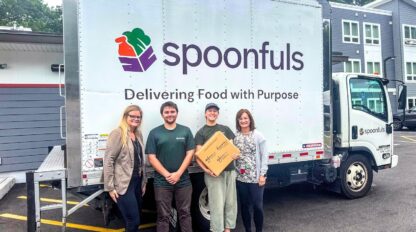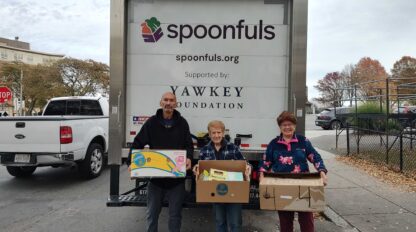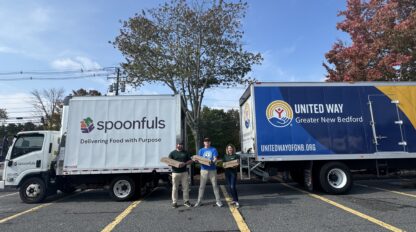The Impact of Food Recovery on the Planet
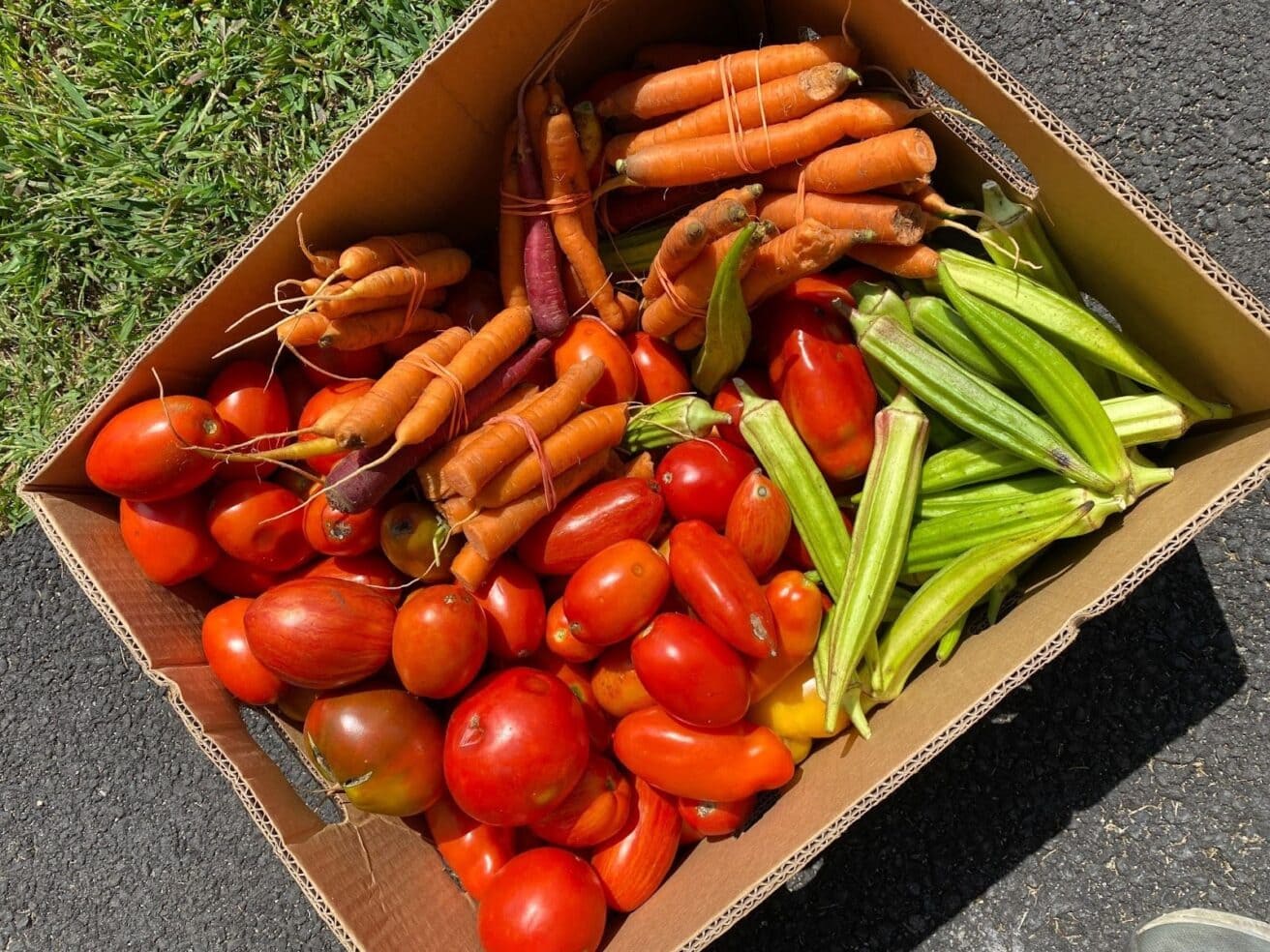
Food waste takes up more space in landfills than anything else. Plus, it’s responsible for 4% of the United States’ total greenhouse gas emissions. In short, wasting food is a big deal.
First, where does food waste happen?

Food waste happens at each stage of the food supply chain, as we can see from data compiled by ReFED. There are:
- Farms leaving produce in fields because it doesn’t meet market standards (put another way: too big, too small, too misshapen, discolored)
- Manufacturers tending with human and machine-made errors that yield unsellable products (like this peanut butter jar with an upside-down label),
- Grocery stores with excess food because customers didn’t buy as much of a product as they usually do or they’ve received deliveries of the wrong product (like when a local Target not set up to sell fresh seafood received these fresh crab legs),
- Households tossing food when it reaches its date label or forgetting about leftovers.
Spoonfuls works primarily at the retail level. We recover still-good, excess or unsold food from grocery stores, farmers markets, and wholesalers and bring that food to community organizations feeding people facing food insecurity. We’re ensuring that good food feeds people, not landfills.
We also create resources to help people waste less food at home (for example, by encouraging individuals and families to take our Food Waste Challenge).
Does wasted food contribute to the climate emergency?
Yes! Producing food – whether it’s eaten or not – has an impact on our planet. There’s land and water usage, fertilizers, farm machinery, transportation, and more that contribute to our Food System’s Carbon Footprint.
The impact on the planet is even greater when food decomposes. It produces the greenhouse gases carbon dioxide and methane, which further contribute to the warming of our planet. Methane in particular is so effective at trapping heat, that reducing food waste in landfills is frequently cited as a critical strategy for reducing all methane in our atmosphere.
Why Food Recovery?
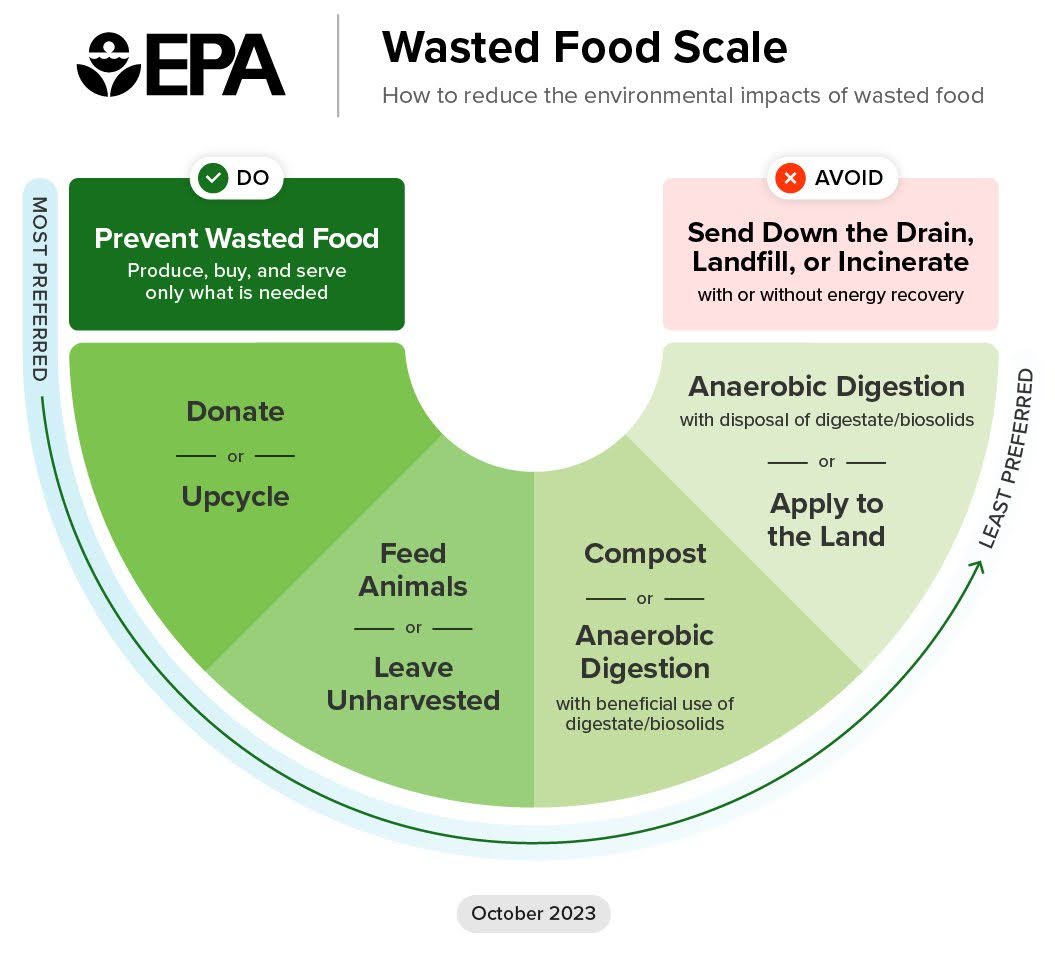
Next to preventing food waste from occurring, donating excess food (aka food recovery) is one of the best ways to address wasted food according to the EPA’s Wasted Food Scale. That’s because food recovery prioritizes people. We focus on intercepting excess food while it’s still good to eat and ensuring it gets to people who need it.
“Unfortunately, the area we serve experiences persistent poverty and high need,” says Lee Drewitz, Director of Program Operations at United Way of Pioneer Valley, a recipient of Spoonfuls’ food deliveries. “Luckily, Spoonfuls is an outstanding partner that provides fresh foods like meat. The recovered food we receive from Spoonfuls is top-rated by the people we serve because the items are always something new, something fresh, and something nutritious.”
Though food recovery’s environmental impact is smaller compared to other climate efforts, like transitioning to renewable energies, it is an important part of collective efforts to reduce the effects of climate change through effective resource management.
Preventing greenhouse gases
In 2024, Spoonfuls kept over 5.5 million lbs. of good food out of landfills, preventing the emission of 2,700+ metric tons of carbon dioxide equivalent into the atmosphere. That’s like the greenhouse gas emissions from:
- 6.9M+ miles, or 1,114 round trips driven from Boston to San Francisco, in a car.
- 305,000+ gallons of gasoline consumed.
- 550+ homes’ electricity use for one year.
Minimizing water usage
We also saved about 362,000,000 gallons of water that would have been used to dispose of the food we recovered. That’s the equivalent of over 21,046,511 average showers or over 105 Giant Ocean Tanks at the heart of the New England Aquarium.
Maximizing resources
By recovering food, we’re maximizing the food resources already available to us and ensuring that the impact producing the food already had on the environment isn’t in vain. And at the same time, we’re lessening the demand to create more food because the excess food we recover is less food families and individuals need to acquire to sustain themselves.
How you can minimize wasted food
Join our efforts to minimize food waste and fight hunger by:
- Donating to help Spoonfuls keep even more food out of landfills in Massachusetts.
- Taking our Food Waste Challenge to learn how to reduce food waste at home.
- Signing up for our emails to learn more about food recovery and stay up to date on our latest ways to get involved.
